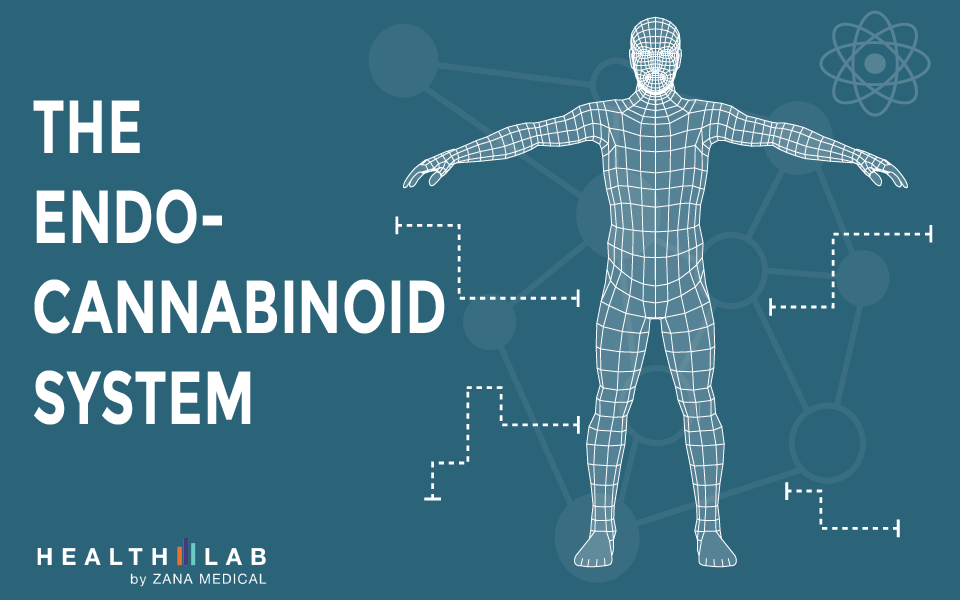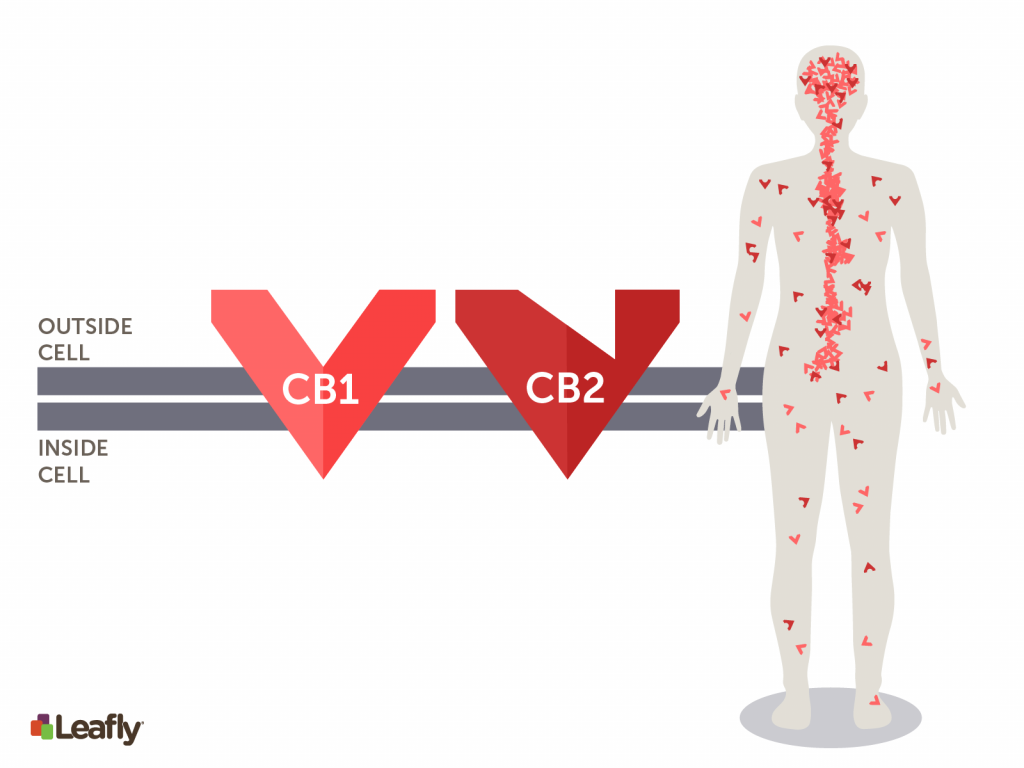Our body has our very own cannabinoid system, an intricate system that many describe as the body’s most important physiological system. The endocannabinoid system — or ECS — produces chemicals (called endocannabinoids) that are similar to chemicals found in the cannabis plant (called phytocannabinoids).

Why is this system so important? It is literally involved in virtually every aspect of our physical and emotional health. The primary function of the ECS is homeostatic, meaning it helps keep our body in equilibrium. The ECS plays important protective and healing roles; it produces chemicals that are neuroprotective, anti-inflammatory, analgesic (pain modulation), anxiolytic (anti-anxiety), and more.
In a recent interview with Dr. Dustin Sulak, a physician and medical cannabis expert (who through his integrative medical clinics in Maine and Massachusetts has treated over 18,000 patients), described this incredible system as our body’s natural “pharmaceutical treasure chest.” Remarkably, as important of a system as the ECS is, we only discovered it just a couple of decades ago. And, despite the fact that it is so influential in the prevention and treatment of so many diseases and disorders, most medical schools only superficially cover it.
When one begins to understand the importance and complexity of the ECS, it’s becomes clear why the cannabis — rich with hundreds of compounds including cannabinoids and terpenes — can be so therapeutically versatile. According to Dr. Sulak, “This one herb [cannabis] and its variety of therapeutic compounds seem to affect every aspect of our bodies and minds.”
Dr. Sulak describes himself as skeptical of any medicine that purports to be a “cure-all” or panacea, but he claims that the more he learns about cannabis through research and hands-on work with patients, becomes more convinced of the ability for cannabis to treat a wide variety of conditions.
Endocannabinoid System Essentials
The ECS was named after the cannabis plant. Endocannabinoids (a name derived from combining “endo” meaning “within” and cannabinoid) and their receptors are prominent throughout the body, particularly in the brain, peripheral organs, connective tissues, and immune cells. They perform various tasks, but share a common goal: homeostasis (or maintaining a stable physiological environment) irrespective of variations in one’s external environment.

Moreover, the ECS is also a powerful and intricate communication system that helps cells within the body communicate (and coordinate). Dr. Sulak describes this system, with its complex actions in all of our body’s organs, as well as our immune and nervous systems, as “literally a bridge between body and mind.” He believes that by learning more about how the ECS works, we can better understand the states of consciousness promote or inhibit health and disease.
How did we discover the Endocannabinoid System?
Interestingly, we only discovered the endocannabinoid system because scientists became curious as to how THC (the primary psychoactive component in cannabis) works. According to Dr. Sulak:
“The endocannabinoid system was discovered when researchers started to look into how does THC work in the body, and what they found was that we have these cellular receptors which we could think of as the keyholes so to speak on the surface of the cells. Certain molecules will fit into these keyholes to have an effect on the internal aspect of what the cell is doing. When researchers found endocannabinoid or what they called cannabinoid receptors, they started to realize, ‘Well, maybe we don’t have these receptors just for the purpose of receiving THC from the plant.’ It’s very likely that our body is producing something that will also fit into these receptors because that’s just the way nature works.” What makes up the Endocannabinoid System?
Humans aren’t the only animals with an ECS. We find it across the animal kingdom in virtually every species. There are three primary components within the ECS:
- Cannabinoid receptors
- Endocannabinoids
- Metabolic enzymes
Cannabinoid Receptors
Cannabinoid receptors are found on the surface of cells where they receive information. Cannabinoids — both naturally occurring and plant or synthetically derived — activate these receptors either directly or indirectly to produce various responses. The two primary receptors (and best studied) are CB1 and CB2.
CB1 receptors are most abundant in the brain. THC binds to CB1 receptors to produce psychoactive and therapeutic effects — in other words, it can help heal you or get you “high.”
CB2 receptors are most abundant outside of the nervous system, particularly in the immune system. (Notably, both types of receptors can be found in many areas throughout the body.) Endocannabinoids
Endocannabinoids
Like plant-derived cannabinoids (phytocannabinoids like THC and CBD) bind and activate receptors. In contrast to phytocannabinoids (like THC), endocannabinoids (like anandamide and 2-AG) are produced naturally by the body. Metabolic Enzymes
Metabolic Enzymes
Metabolic enzymes break down (or degrade) endocannabinoids after they are used. The two most well-known and characterized enzymes are FAAH and MAGL. FAAH breaks down anandamide (the body’s natural THC), while MAGL breaks down 2-AG.
Nick Jikomes, a Harvard educated neuroscientist and scientific advisor at Leafly, describes their role:
“These enzymes ensure that endocannabinoids get used when they’re needed, but not for longer than necessary. This distinguishes endocannabinoids from many other molecular signals in the body, such as hormones or classical neurotransmitters, which can persist for many seconds or minutes, or get packaged and stored for later use.”
The ECS is clearly an amazing system that we continue to learn more about, and the more knowledge we acquire, the better we understand how to treat and prevent disease (not just with cannabis, but with new drugs that target this system).
To learn more about the ECS, read:
- Introduction to the Endocannabinoid System by Dustin Sulak, DO
- What is the Endocannabinoid System and What is Its Role? By Nick Jikomes, PhD

